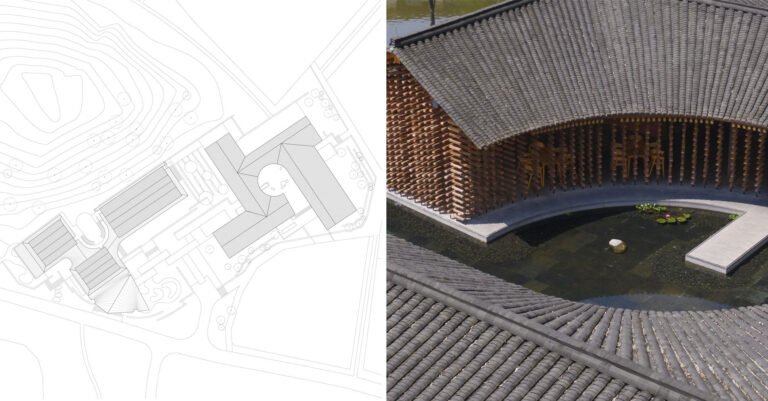team_bldg’s installation reconstructs the relationship between homes + nature in shanghai
team_bldg deconstructs the home for site-specific installation
This spring, the pandemic and lockdown brought the public’s daily focus back to the space of ‘home’. Throughout the long and difficult period, as people were confined to their homes, notably the animals and plants of the city thrived. Urging us to rethink the standing relationships between people, home, and nature, TEAM_BLDG’s PARKLIFE deconstructs and reconstructs these notions to unify the themes of ‘home’ and ‘micro park’.
Surrounded by buildings in a bustling shopping street in downtown Shanghai, China, PARKLIFE creates a place where passersby can pause and rest in in a moment of quiet amid nature. The spatial installation takes shape as a small complex of three semi-open shelters made of prefabricated plywood components, centered around a central courtyard full of overgrown plants. Each represents an individual deconstructed room in the traditional home and maintains a sense of privacy and tranquility for its users.
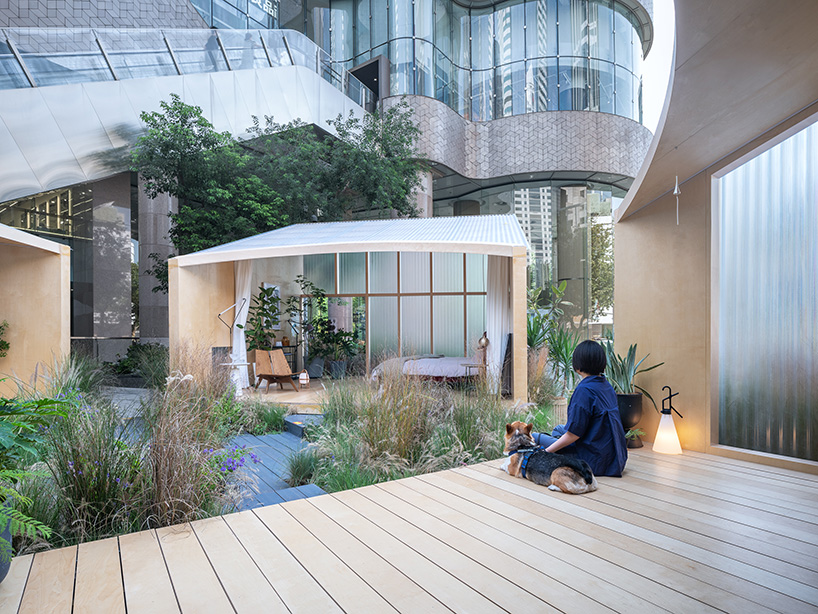
the Engawa space reconnects visitors with nature in downtown Shanghai | all images by Studio FF
engaging architecture, its inhabitants, & nature in harmony
To foster a harmonious relationship between the private and public space, the team at TEAM_BLDG primarily drew on the concept of the ‘Engawa’ of traditional Japanese houses, which serves as an intermediate space uniting the realm of inside and outside. Arranged in a circular plan, the three semi-enclosed wooden volumes center around a courtyard which sits as a shared micro-park overgrown with plants. The composition represents a deconstructed house, with each wooden volume representing a reconstructed basic room – the living room, bedroom, and bathroom.
With no hard barrier or threshold between the separate spaces, crowds can freely wander in and around the space in various entangling routes. This flexible circular arrangement further integrates the pedestrian walkways intersecting the original site which the architects used as a means to divide the three rooms and garden.
Due to the temporary nature of the installation and the need for low-tech construction, in the garden the main plant used is manzanita, which is less dependent on water and fertilizer. Resistant wood also forms staggered paths to guide people and provide a natural green, outdoor space for group activities.
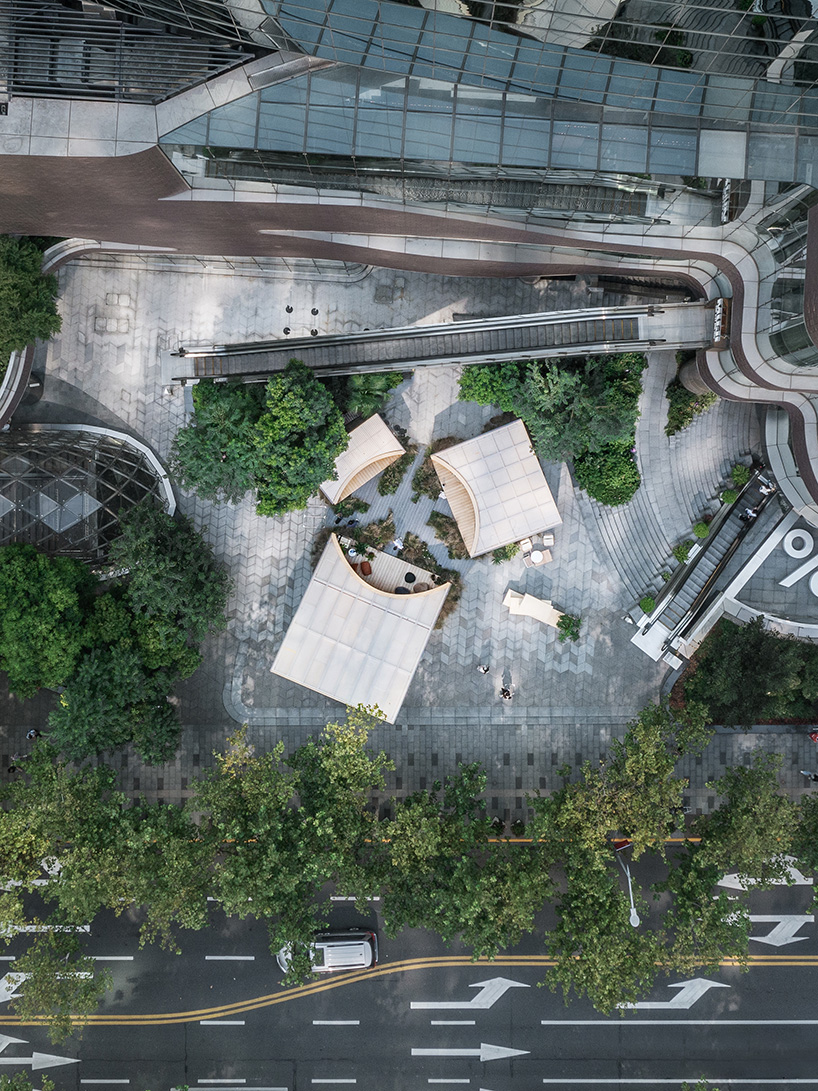
PARKLIFE’s three volumes embrace one another around a circular plan
PARKLIFE: a tranquil place to rest in downtown shanghai
As visitors move from room to room, nature flows through thanks to the blurred boundary of the installation between inside and outside. Under the eaves, a variety of small shrubs and trees thrive in a controlled manner. The interior reduces the decorative language to a minimum and lets light, plants, and furniture elements become the protagonists of the space.
Each three-walled room is cut with an arch through a circle with a radius of 3.5 meters and topped with a sloping roof. This creates a sheltered but relatively open colonnaded space under which nature and the home are engaged in balance with one another, ‘as if embracing each other and giving comfort to people.’ By removing the fourth enclosing wall, and including translucent panels, the installation brings in daylight during the day and blurred shadows of light at nightfall. In this way, the different depths of the living room, bedroom and bathroom can be interpreted and experienced in several ways. Creating a relaxing, warm atmosphere, ‘PARKLIFE can reinforce people’s idea of a home and a way of living, and experience the ‘infinite’ life in a limited space,’ note the architects.
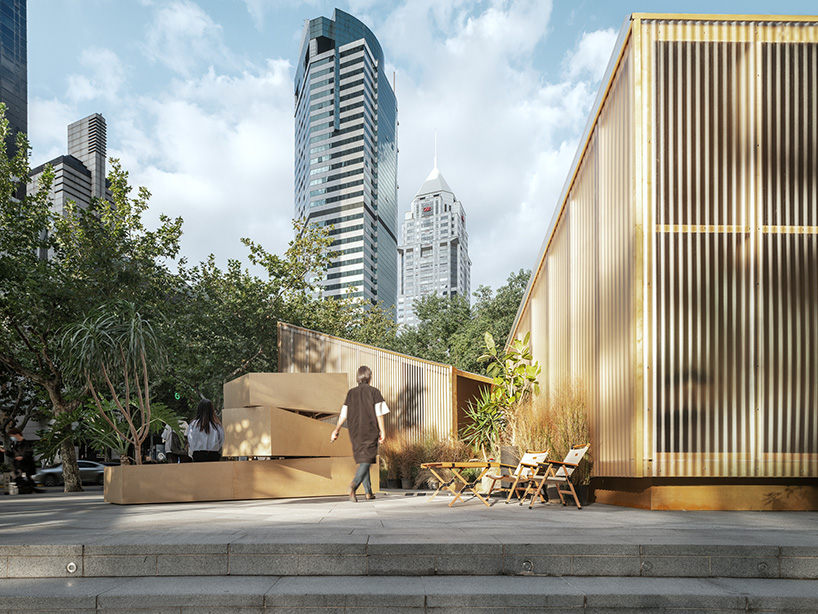
sloping roofs form the centripetal character and channel rainwater into the courtyard
Taking into consideration the busy location and visible permeability of the street facade, TEAM_BLDG’s design accommodates for the different physical and privacy needs of people in their living spaces with its dimensions and angling.
Contrasting plywood and frosted corrugated panels form PARKLIFE’s facade, fusing inside and outside, real, and virtual, between the two planes. By reversing the structural design to expose the keel, the interior facade is tidied up, while the vertical keel reflects the vertical growth pattern of the trees around the base. In addition, the three rooms are punctuated with window openings at certain points on the facade to enhance the feeling of permeability and bring more natural light inside without compromising the privacy of its users.
PARKLIFE was created as part of Design Shanghai·Xintiandi Design Festival 2022. At the end of the exhibition, all of the potted plants rehoused while the plywood was dismantled, cut, and reassembled for a ‘sustainable’ cycle, reappearing as furniture in other living spaces.
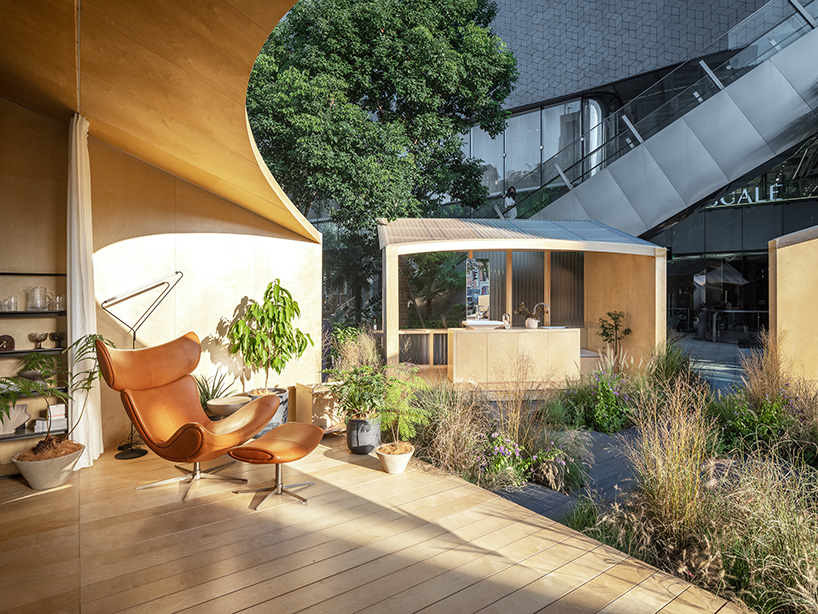
furniture designed by TEAM_BLDG
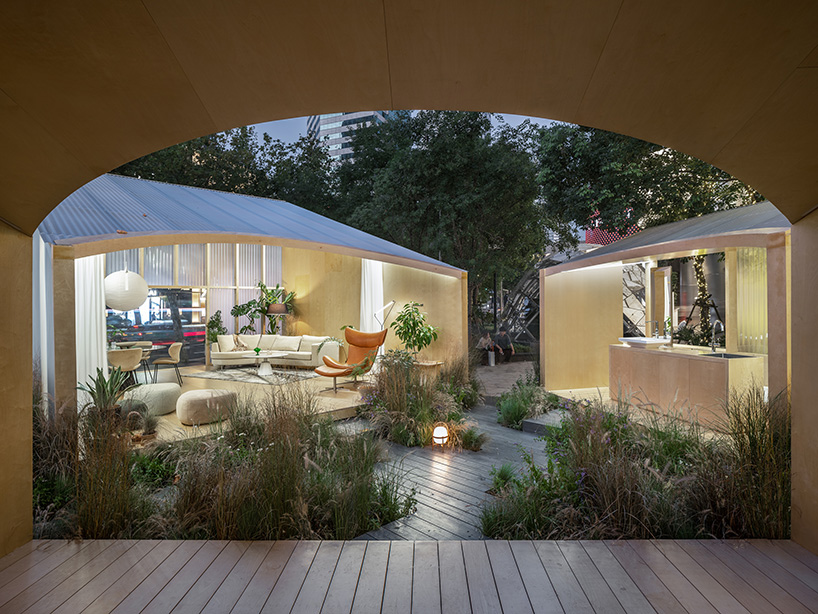
anticorrosive wood forms a staggered path in the courtyard
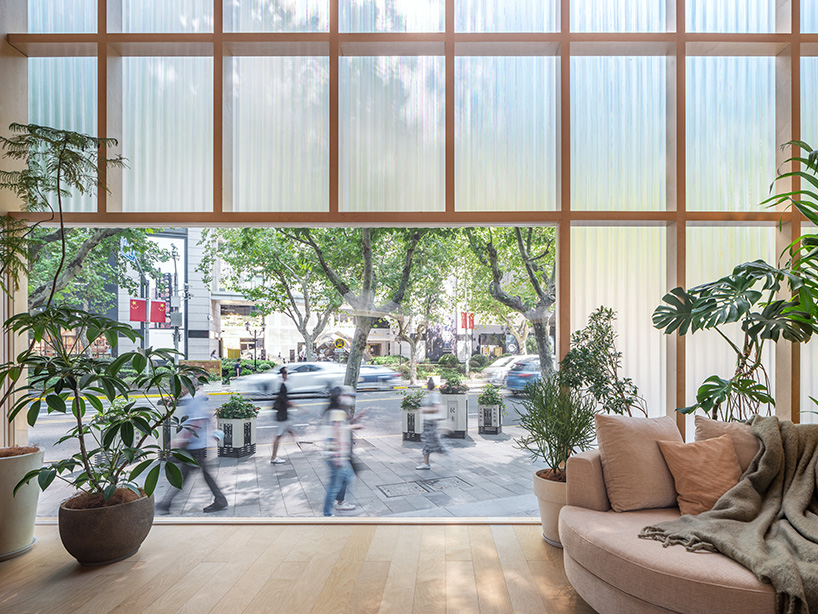
the window facade meets partial visibility in order to attract pedestrians into the installation
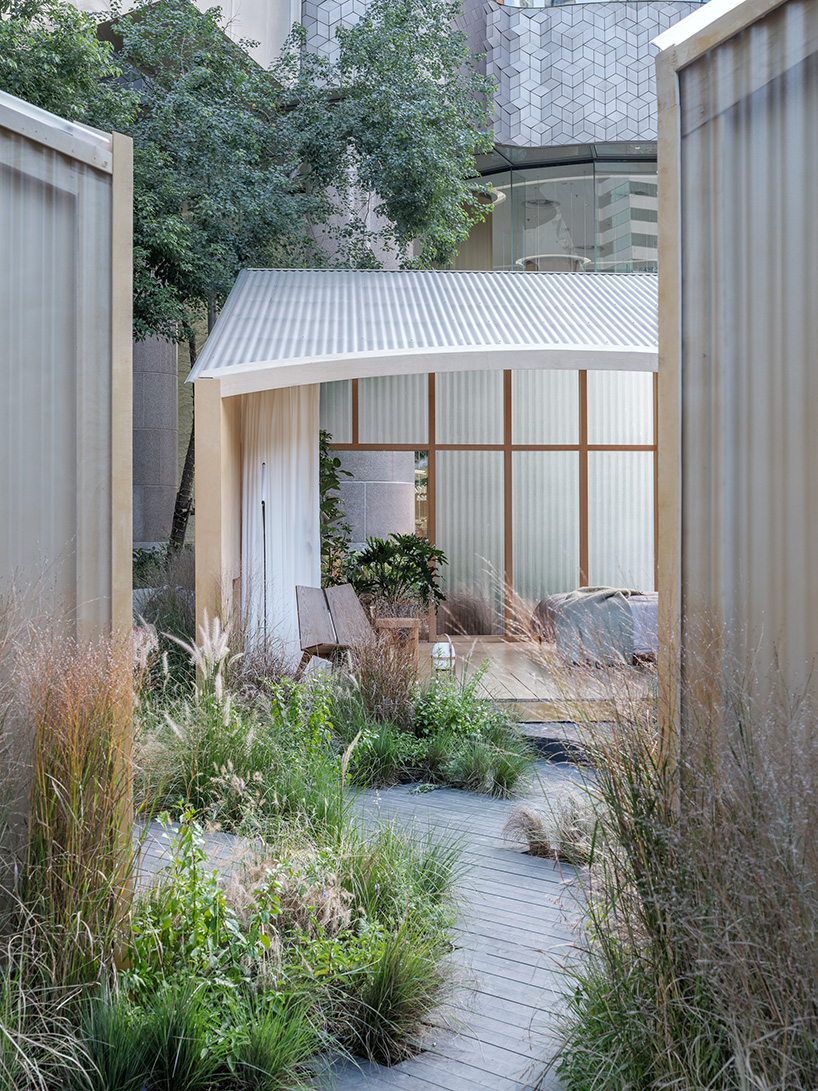
Engawa strikes a balance between home and nature
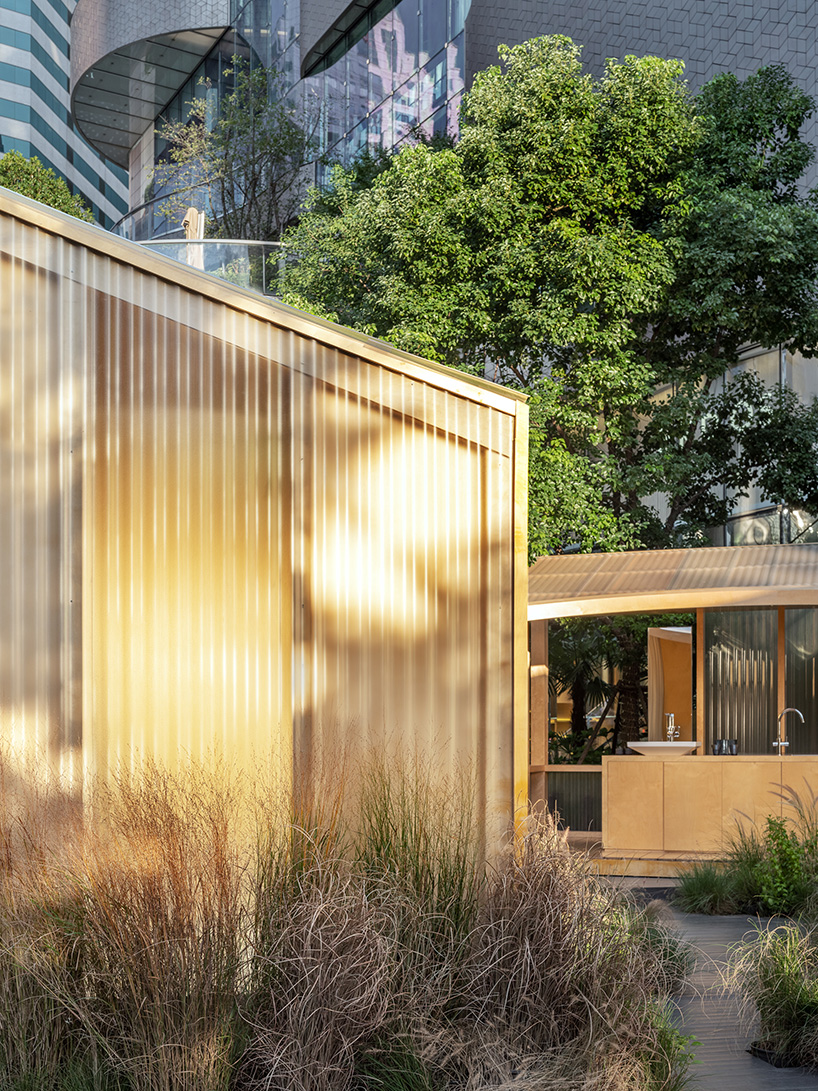
vertical keel and PC frosted show two levels of the facade

